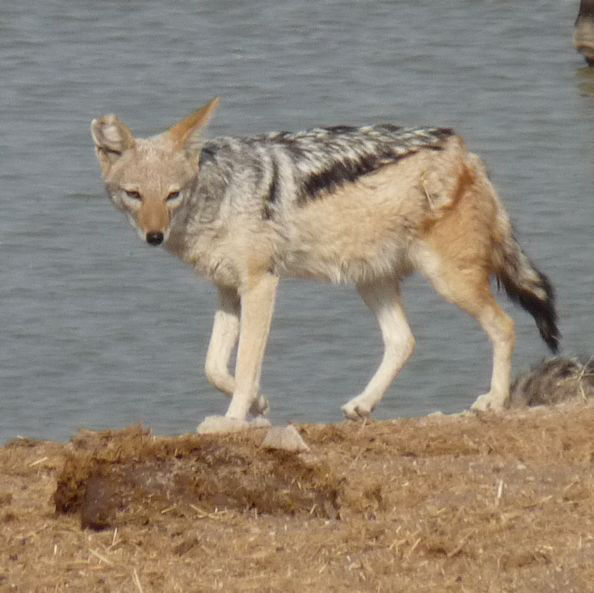Hunting Portal
Namibia



Characteristics:
The characteristic features of the black-backed jackal are the dark saddle on its back, which runs from the nape of the neck to the base of the tail, the black, bushy tail, and reddish flanks and limps. In the field these features normally can be distinguished even at a distance.
Standing about 40 cm / 16 inch at the shoulder and 100 cm / 39 inch in total length, adult males have a mean mass of about 8 kg / 16 lb, females 7kg / 14 lb. In the winter coat, adults, in particular males, from the drier western areas develop the rich reddish colour to a high degree, making them very striking and handsome animals.
Occurrence:
The black-backed jackal occurs throughout the entire Namibia.
Habits:
Black-backed jackal exhibit both diurnal and nocturnal activity, with their circadian activity pattern closely resembling that of their important prey animals, particularly rodents. In National Parks and other areas, where human disturbance is negligible, they may be seen moving during daylight hours.
Normally occurring in pairs of their own, aggregations of up to eight or ten may be found at carcasses. Pairs and family parties, consisting of the parents with three or four half to three-quarter grown young, move and forage as a group. Movement is normally at a trot, except when hunting for small vertebrates and invertebrates when they will walk around slowly, ears pricked, searching for prey. Their senses are acute, their sense of smell being developed particularly well.
They may rest in holes in the ground, in rock cervices among piles of boulders, preferring this more substantial cover to that of the under bush or tall grass. However, in areas where human disturbance is absent, they prefer to rest in an open spot from where they have a good view of the surrounding terrain.
Voice:
The territorial call is a long drawn out “nyaaaa”, followed by a staccato “ya-ya-ya-ya”, and is one of the characteristic sound of the African night. If concerned and under stress, they may “krecker” with a shrill chattering noise. The young whine like puppies, especially when hungry. A persistent “nya-nya-nya” call is given out when a large predator is sighted.